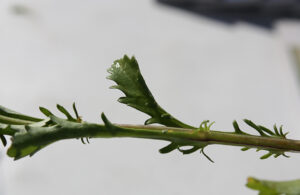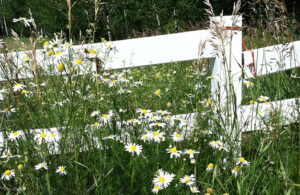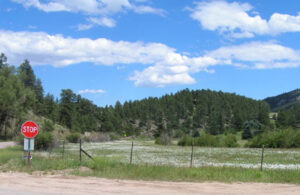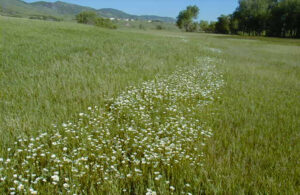Oxeye Daisy
Leucanthemum vulgare
Oxeye daisy is a perennial member of the Sunflower family.
It has 1 to 2-inch-wide compound flowers with 15-30 sterile white ray flowers and a central button made up of many yellow disk flowers. Flowerheads are solitary at the ends of thin stems. The flowerheads have narrow bracts with brown margins.
Leaves are lance-shaped with toothed edges and mostly hairless. Stem leaves attach directly to the stem and are alternate.
Plants are from1 to 3 feet tall. They are found along rights-of-way, in meadows, and in rangeland. Sheep and goats will graze but most livestock and wildlife will not feed on it.
Oxeye daisy reproduces by spreading rhizomes and seed. An escaped ornamental, it can often be found as an contaminate in wildflower seed mixes.
It is an escaped ornamental that was first recorded in the US in 1838. Since then it has become widely spread and can be found in all 50 states.
Oxeye daisy can be easily controlled by pulling young plants or by treating with herbicide.
Leucanthemum vulgare (oxeye daisy) (cabi.org)
Oxeye Daisy – Utah Weed Control Association
Utah Weed Control Association – Improving weed control in Utah





